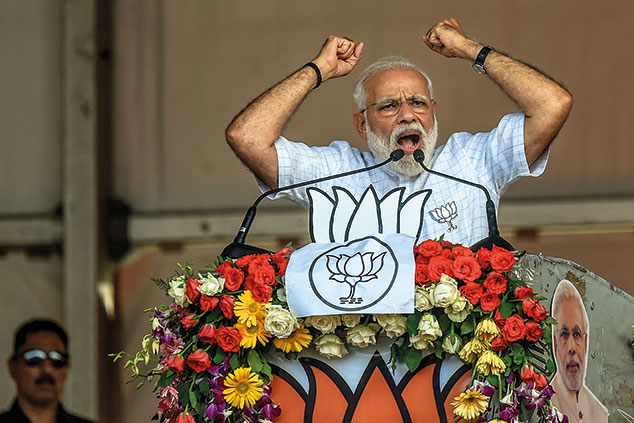
For now, however, further potential reforms have been overshadowed by a pre-vote competition by the two main parties “to shower money on the indigent”, says The Economist. The governing Bharatiya Janata Party (BJP) pays benefits to farmers who own less than five acres of land. The Congress party has promised cash payments to 50 million of the poorest households. “These ideas need rethinking.” Instead of throwing money at the crowd, India needs to reform its safety net, which often fails to reach those in dire need. It is both “immensely complicated, with more than 950 centrally funded schemes and subsidies, and stingy”. India is already running a high fiscal deficit, and any new government will need at least two years to pull it back to 3%, says Devangshu Datta on Quartz. At the same time, tax revenues are below their target estimate.
A massive consumer market
Investors will be keeping a close eye on state spending for now, but the longer-term outlook remains compelling. India is already contributing as much to world GDP growth as the UK, France and Germany combined, and GDP is expanding at an annual rate of 7%. The young population (two-thirds of which is under 35) and expanding middle class promise strong consumption and growth for decades to come. “Consumer spending is growing twice as fast as the expected global average,” says Tom Stevenson in The Daily Telegraph. As a result India is soon expected to become the third-largest consumer market worldwide after the US and China. Meanwhile, India’s services sector – which accounts for 60% of the economy – is growing strongly in the areas of tourism, IT and legal services.
India is also less vulnerable to a global slowdown than other countries in the region: exports comprise just 20% of its GDP. Our favourite India play is the Aberdeen New India Investment Trust (LSE: ANII), which is on a discount of 14% to its net asset value.
Ignore the bitcoin bounce
In the first week of April bitcoin gained 15%, surpassing the $5,000 level for the first time since November. It had fallen a long way from its record peak of $20,000 in January 2018. “But good luck finding a reason to explain the sudden spike,” says Paul La Monica on CNN. Some say bitcoin’s sudden price rally was sparked by “a large trade order from a mysterious buyer”, notes Billy Bambrough on Forbes. This set off a wave of “algorithmic buying as computer programs scrambled to place orders of their own” to partake in the sudden price surge.
Dramatic price swings are nothing new with bitcoin. As with previous rallies, the current spike has led some investors to believe that bitcoin is back, fuelling cryptocurrency investors’ hope that the currency will establish itself in the long run. It won’t, says The Economist. Cryptocurrencies have been around for a decade now, yet buying goods and services with them “remains a niche pastime”. What’s more, the underlying technology “is too clunky to operate at scale”.
For example, the bitcoin network can only process seven transactions per second (compared with Visa, which can handle tens of thousands). Then there’s fraud. “Transactions are irreversible,” which is “a boon for con artists. Pyramid schemes are rife while cryptocurrency exchanges often collapse or are hacked.” Ignore this asset class.